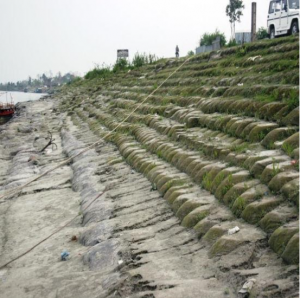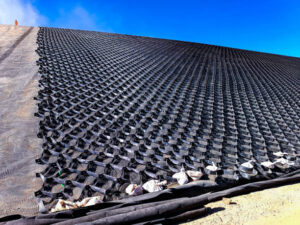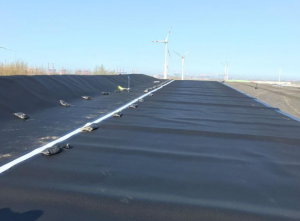Canal Work Project at IGI Airport, Delhi
As access to clean water becomes more challenging, the necessity for secure water storage and transportation grows. Urban water needs and growing agricultural production in rural locations around the world worsen the problem. There is a huge need for water in locations where it does not naturally exist in sufficient quantities. Canals have been built to convey water from the source to where it is needed, which has helped to alleviate the situation. Many of these canals have been lined with clay or concrete in the past.
While earthen canals are extremely inexpensive to build, they lose up to 50% of the water they transport due to seepage. They are also susceptible to erosion, vegetative growth, and other issues, all of which limit their effectiveness over time. Concrete canals ease erosion and vegetative growth problems, but they are more expensive to build and are prone to fracture over time, resulting in significant water loss due to seepage. In fact, a concrete-lined canal may still lose 30% of its water to seepage, resulting in a significant financial investment with little return on investment.
The Indira Gandhi International Airport (IGI) in Delhi has made a significant contribution to water conservation! Apart from being one of the world’s best airports, the Delhi airport is also implementing environmental and water-saving measures. Various steps, including green cover plantations throughout the airport, have been implemented to protect the environment. At the same time, a new autonomous irrigation system for water conservation has been installed at the airport. Around four lakh square meters of land is watered using this system, which is powered by four underground sewerage treatment facilities.
Solution
Geosynthetics can considerably improve the performance of a canal lining system, whether used alone or in combination with a concrete veneer.
According to studies, seepage can be decreased from 50% or more for earthen canals to 10% for geomembrane-lined canals and less than 5% for geomembrane-lined canals combined with a concrete top. In comparison to a concrete-only system, not only is erosion and vegetative infiltration decreased, but leakage is also considerably reduced.
While the concrete veneer may break over time, the geomembrane behind it remains in place to prevent seepage until the concrete is repaired. Geotextiles, in addition to geomembranes, can be employed beneath the geomembrane to protect it against rocky or uneven subgrade. Geogrids could be employed to support the lining system if the subgrade is inadequate.
According to the facilities of the terminal, arrangements for water conservation have been made along with the Canal Work Project of Ocean Global. The inclusion of modern technology of using the Canal optimally has been supported for installing the system. The water utilized at the airport is delivered to four underground water treatment plants with a combined capacity of 3.5 million liters for filtration and refinement. The water is then used to irrigate plants through a 90-kilometer-long pipe.
A total of four lakh square meters of trees have been planted in the airport area. Microprocessor-based technology is utilized to treat the water before it is used for irrigation. A sprinkle and drip irrigation system is used in the irrigation process. This method not only prevents the waste of water and power but also aids in the preservation of soil quality and land production.
The Construction Process
Canal liners made of geomembrane can be uncovered or covered with concrete. Most geomembranes are UV stabilized, meaning they may be left out in the sun for long periods of time without losing their effectiveness. Most geosynthetic lined canal systems should be protected with a concrete cover or, at the very least, an earthen cover for ballast because exposed geomembranes are more prone to damage from rocks, debris, equipment, animal intrusion, and vandalism. The protective concrete coating for such applications could be cast-in-place with reinforcing steel, pumped into geotextile forms, pre-cast in panels, or sprayed on.
Geomembranes are ideal for lining existing earthen or concrete canals that are broken and leaking, as well as for new construction. If the present budget does not allow for a complete relining, different parts of the canal may be restored over time to prevent leakage at important spots.
The landfill needs 4000 sq m of 1.0 mm HDPE Geomembrane to meet its capacity. The delivery, installation, and connection of a 1.0mm thick Geomembrane at the bottom and slopes was part of Ocean Global’s scope of work. The Geomembrane contains 97.5 percent Polyethylene and 2.5 percent Carbon Black. In the environment, this membrane is resistant to cracking. Because of its high UV protection, it may be utilized both indoors and outdoors.
Certain layers were given by the client in order to meet the goal of preventing leachate from seeping from the landfill’s bottom. The layers consisted of a 1000mm embankment, 1.0 mm thick Geomembrane, 300mm coarser material, and 2 mm drainage aggregate. A layer of cement concrete and a 3m lap were used to secure the top of the Geomembrane.



